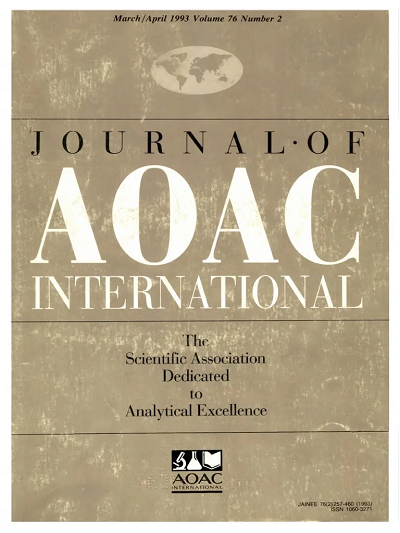在有毒杂质存在的情况下对创新止痛药 "曲马多和塞来昔布 "混合物进行可持续分光光度法微量定量的激动人心的进展,促进绿色和白色研究
IF 1.7
4区 农林科学
Q3 CHEMISTRY, ANALYTICAL
引用次数: 0
摘要
背景曲马多(TRM)和塞来昔布(CLX)是一种新型混合物,有助于在其他止痛药无效时缓解急躁的急性疼痛。另据报道,目前研究的药物曲马多和塞来昔布可用于控制 COVID-19 症状。目标 目前的工作突出了现代药物分析的三个重要支柱:杂质分析、绿度/白度研究和简便灵敏。由于 4-甲基苯乙酮对人体羰基还原酶(I 型)有抑制作用,而且该化合物可能对健康造成危害,因此对其在 CLX 所有剂型中的浓度进行调节至关重要。方法 开发了两种简单、绿色的分光光度法,即第三衍射法(D3)和傅立叶自解旋法(FSD),用于分辨曲马多和塞来昔布新型片剂复方制剂中存在 4-甲基苯乙酮(4-MAP)这一工艺相关杂质时的严重重叠光谱。结果 两种方法均显示出可接受的线性关系和极佳的相关系数。简单地说,当塞来昔布和 4-甲基苯乙酮出现零交叉时,两种方法都能测出曲马多。同样的程序也适用于测量塞来昔布及其与加工相关的杂质 4-甲基苯乙酮。结论 根据 ICH 指南对所开发的方法进行了全面验证。学生 t 检验和 F 检验表明,现行方法与报告方法之间没有统计学上的实质性差异。要点 目前还没有发表过同时分析 TRM 和 CLX 以及 4-MAP 的分光光度法。因此,新开发的分光光度法在药物分析领域具有重要的现实意义和独创性。本文章由计算机程序翻译,如有差异,请以英文原文为准。
Exciting Advances in Sustainable Spectrophotometric Micro-Quantitation of an Innovative Painkiller “Tramadol and Celecoxib” Mixture in the Presence of Toxic Impurity, Promoting Greenness and Whiteness Studies
Background Tramadol (TRM) and celecoxib (CLX) are a novel mixture that helps relieve impetuous, acute pain when other painkillers have no action. It is also reported that the currently studied drugs, tramadol and celecoxib, are used to control COVID-19 symptoms. Objective The current work highlights three important pillars of modern pharmaceutical analysis, which are as follows; impurity profiling, greenness/whiteness studies and simplicity accompanied by sensitivity. Since 4-methyl acetophenone inhibits the human carbonyl reductase enzyme (type I), and since this compound may pose a health risk, it is crucial to regulate its concentration in all dosage forms of CLX. Methods Two simple and green spectrophotometric methods were developed, namely; Third Derivative (D3) and Fourier Self Deconvulation (FSD) for resolving severely overlapped spectra of tramadol and celecoxib in the presence of 4-methyl acetophenone (4-MAP) as a process-related impurity in their novel tablet combination. Results The two approaches showed acceptable linearity with an excellent correlation coefficient. Simply, for both methods tramadol was measured when celecoxib and 4-methyl acetophenone were zero-crossing. The same procedure was applied for measuring celecoxib and its process-related impurity; 4-methyl acetophenone. Conclusion The methodologies developed were thoroughly validated in compliance with ICH guidelines. Student t and F-tests revealed no statistically substantial variation among the current methods and the reported method. Highlights No spectrophotometric methods have been published for the simultaneous analysis of TRM and CLX along with 4-MAP. As a result, the newly developed spectrophotometric approaches hold great relevance and originality in the field of pharmaceutical analysis.
求助全文
通过发布文献求助,成功后即可免费获取论文全文。
去求助
来源期刊

Journal of AOAC International
医学-分析化学
CiteScore
3.10
自引率
12.50%
发文量
144
审稿时长
2.7 months
期刊介绍:
The Journal of AOAC INTERNATIONAL publishes the latest in basic and applied research in analytical sciences related to foods, drugs, agriculture, the environment, and more. The Journal is the method researchers'' forum for exchanging information and keeping informed of new technology and techniques pertinent to regulatory agencies and regulated industries.
 求助内容:
求助内容: 应助结果提醒方式:
应助结果提醒方式:


